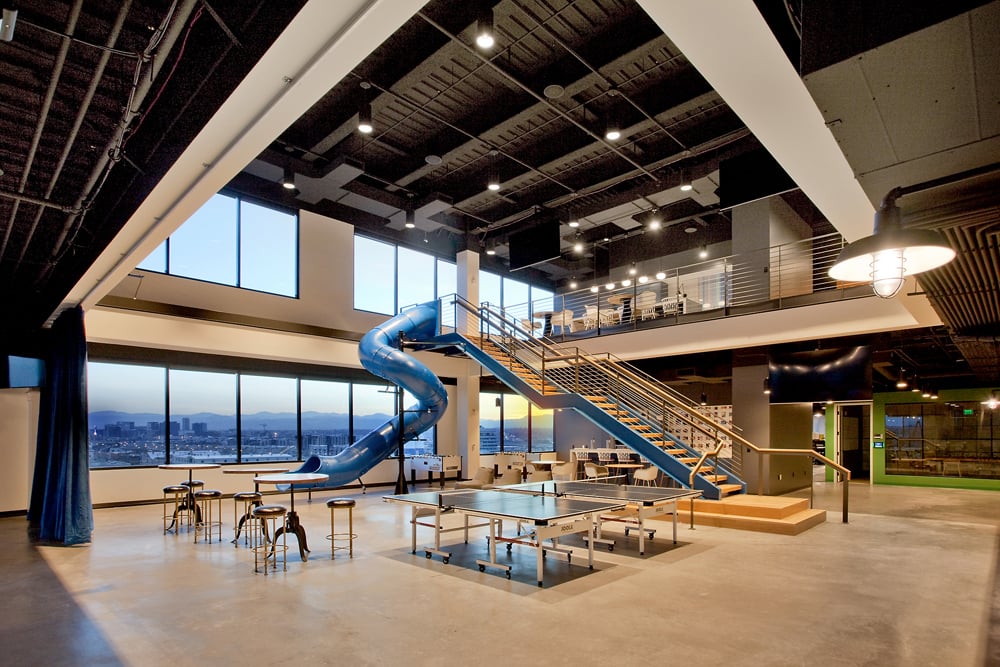
June 29, 2021
Balancing ‘Me Space’ and ‘We Space’ as Offices Reopen
A recent Think Tank panel dug into the design possibilities for the next generation of workplaces.

“What is sacred about the office? What do you like most about working from home?”
These were two central questions posed at the beginning of a Think Tank session on May 20 titled “Me Space Versus We Space: Designing the Next Evolution of Work.” Denver’s Open Studio Architecture hosted the event, which was moderated by Metropolis editor in chief Avinash Rajagopal.
The assembled group—consisting of two designers, a real estate developer, and a corporate facilities chief—agreed that hybrid work models will be the post-pandemic norm, and offered variations on this theme. Moderator Rajagopal shared a perspective on what is sacred about the office: its “conviviality” and “work friends”—in other words, the social dimension of being in an office. Meanwhile an architect proposed a hybrid back-to-work arrangement that would allow partial working from home.
“Do we have mandatory ‘same days’—for example, Monday through Wednesday are required in-office days and Thursdays and Fridays are optional?” asked Laura Mears, architect, Open Studio Architecture. “The challenge with hybrid is that you lack face-to-face encounters. If you choose to be all remote, you may have to decide it’s a trade-off not to get promoted and move up the ladder in exchange for all that flexibility.”
“Casual interaction is very important,” said Mears’s colleague Abbie Reece, senior interior designer, Open Studio Architecture. “But that person at home has missed out on that conversation.” Reece continued: “Etiquette plays a large part. It’s important to be respectful and empathetic to the new arrangement.”
At one point, Rajagopal asked a question of the entire group: “What have you learned this year?”
“I’ve enjoyed being able to collaborate with people I’d normally not interact with,” said Shahana Wyss, senior director, real estate and facilities, Angi.
Justin Croft, vice president of development, Zeppelin Development in Denver, offered this: “For me, it was recognizing that there’s a time for solitude and a time for community. A lot of us had so much solitude that we were able to see what was lacking on the community side. I think on the community side not undervaluing the creative collisions—it’s exciting to see the palpable energy of people coming together and sharing ideas.”
Reece’s reflection was “the sensitivity that we’re all going through this together. There’s not one recipe that will work alone. It’s been a deeper relationship with my colleagues and clients.” Finally, Mears averred that “it surprised me that I really love working from home. I can shut off my email for an hour or two; I love my midday walk. But I miss those creative collisions.”
As a designer, Mears champions communal space. “While you’re going to have less ‘me space,’ you’re going to have more ‘we space.’ It’s vital to have a variety of places to work at when you’re at work. It’s important to have places that are accommodating to all people.”

The Think Tank discussions were held on May 6, 13, and 20. The conversations were presented in partnership with CertainTeed, DuPont Tedlar, GROHE, Kimball, Mannington Commercial, and Versteel.
You may also enjoy “Sustainable Building Must Take Site and Community into Account”
Would you like to comment on this article? Send your thoughts to: [email protected]
Register here for Metropolis’s Think Tank Thursdays and hear what leading firms across North America are thinking and working on today.





